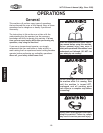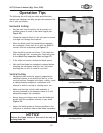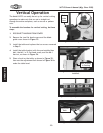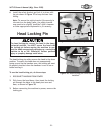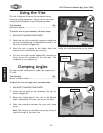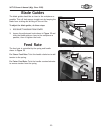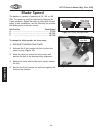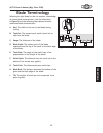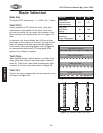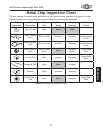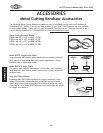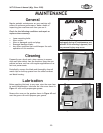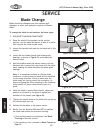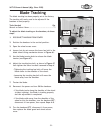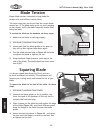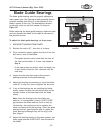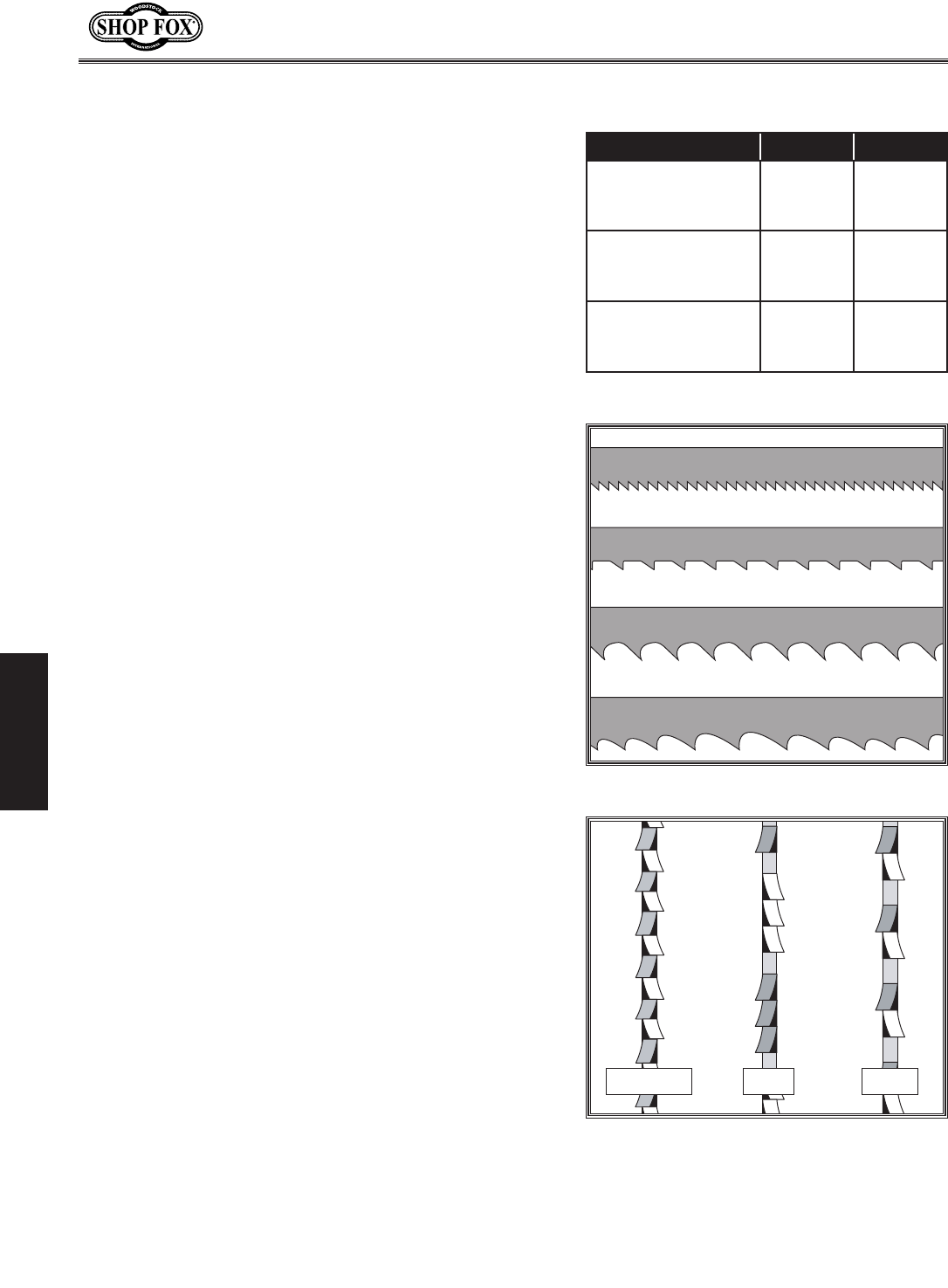
-26-
N(.(,Fne\ijDXelXcD]^%J`eZ\)&'/
FG<I8K@FEJ
9cX[\J\c\Zk`fe
9cX[\J`q\
The Model W1715 accepts only
1
⁄2" x 0.025 x 64
1
⁄2" blades.
Kffk_G`kZ_
Usually measured as TPI (Teeth Per Inch), tooth pitch
determines the size/number of the teeth. More teeth
per inch (fine pitch) will cut slower, but smoother; while
fewer teeth per inch (coarse pitch) will cut rougher, but
faster.
As a general rule, choose blades that will have at least
three teeth in the material at all times. Use fine pitched
blades on harder metals and coarse pitched blades on
softer metals. When selecting blades, refer to =`^li\*.
for recommended blade tooth (TPI) and speed (FPM)
based on the workpiece material.
Kffk_Jkpc\
When selecting blades, another option to consider is the
shape, gullet size, teeth set and teeth angle—otherwise
known as “Tooth Style." Many blade manufacturers offer
variations of the four basic styles shown in =`^li\*/.
Kffk_J\k
Three of the most common tooth sets are alternate, wavy,
and raker (see =`^li\*0).
DXk\i`Xc KG@ =GD
Tool Steel
Stainless Steel
Bearing Bronze
24 78
Mild Steel
Hard Brass
Bronze
18 108
Soft Brass
Aluminum
Other Light Metals
14 180
=`^li\*.% Blade TPI and FPM chart.
Standard (or Raker)
Skip (or Skip Tooth)
Hook (or Claw)
Variable Pitch (VP)
=`^li\*/% Bandsaw blade tooth styles.
=`^li\*0% Bandsaw blade tooth sets.
Alternate Wavy Raker



